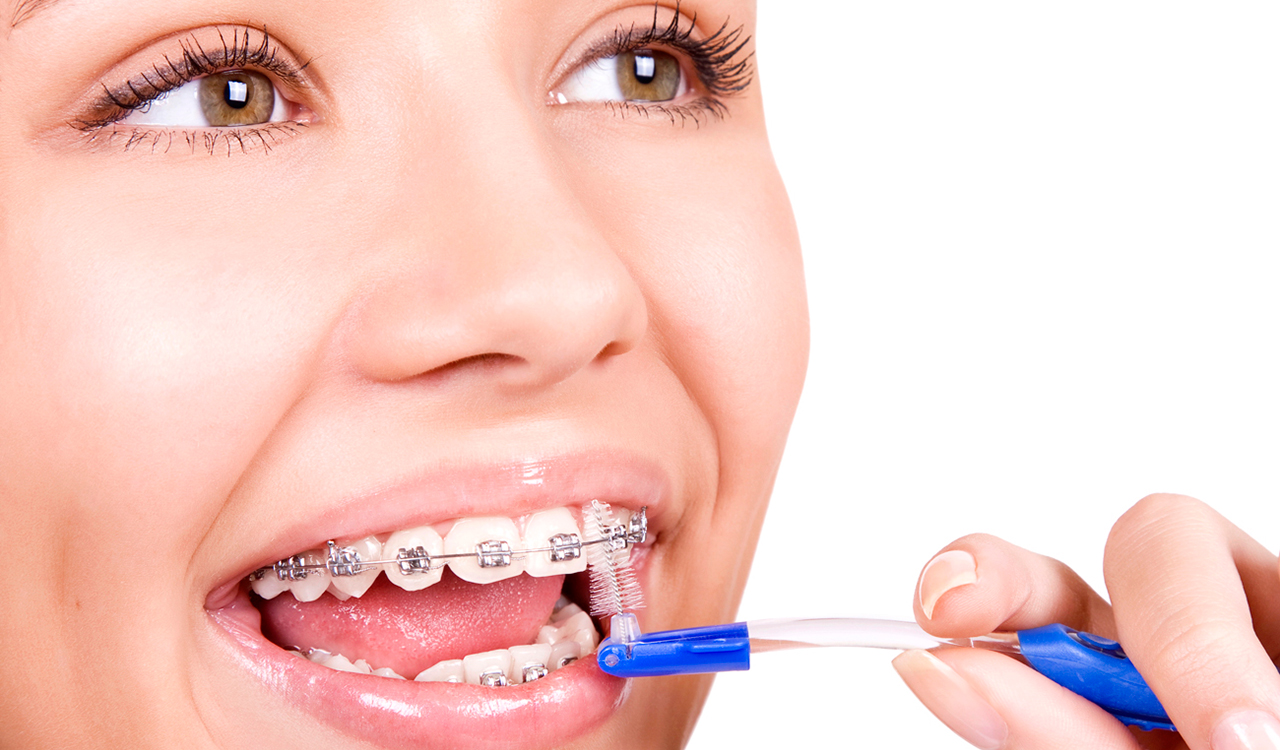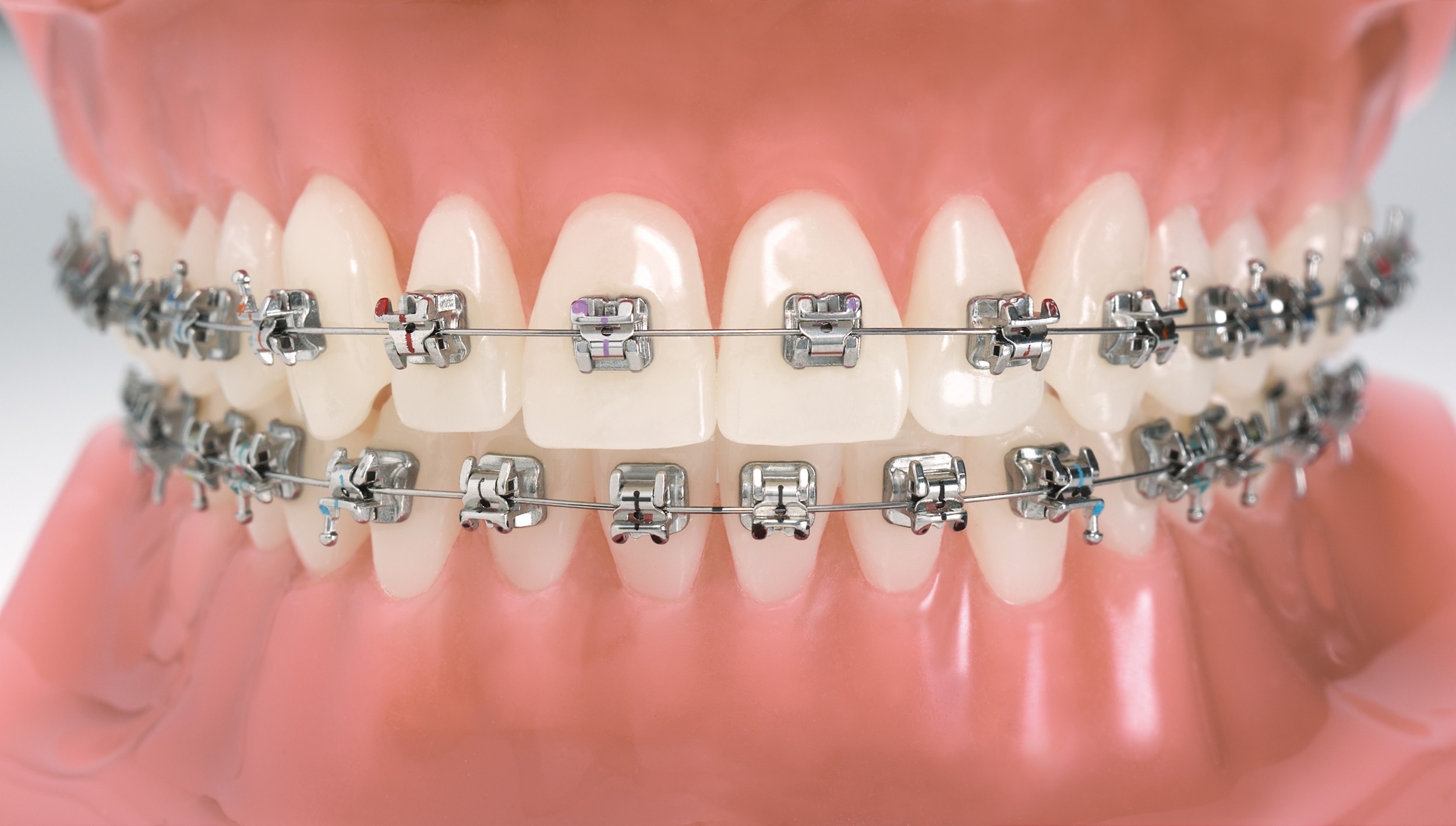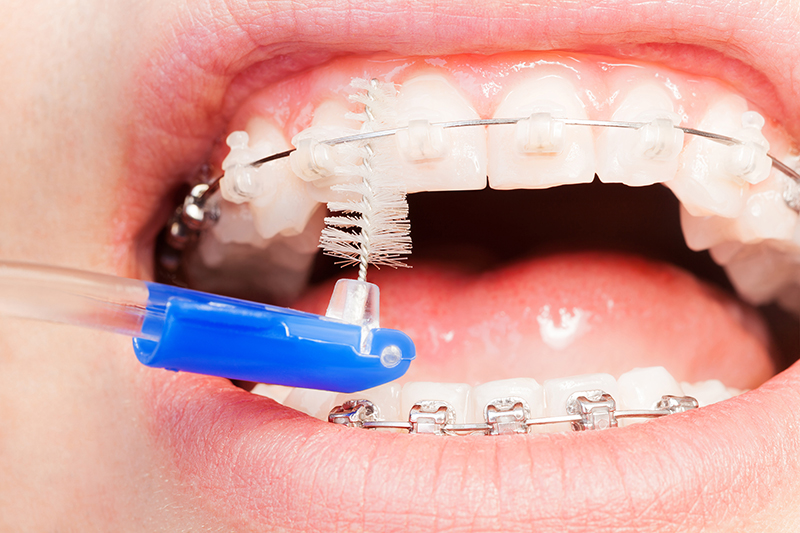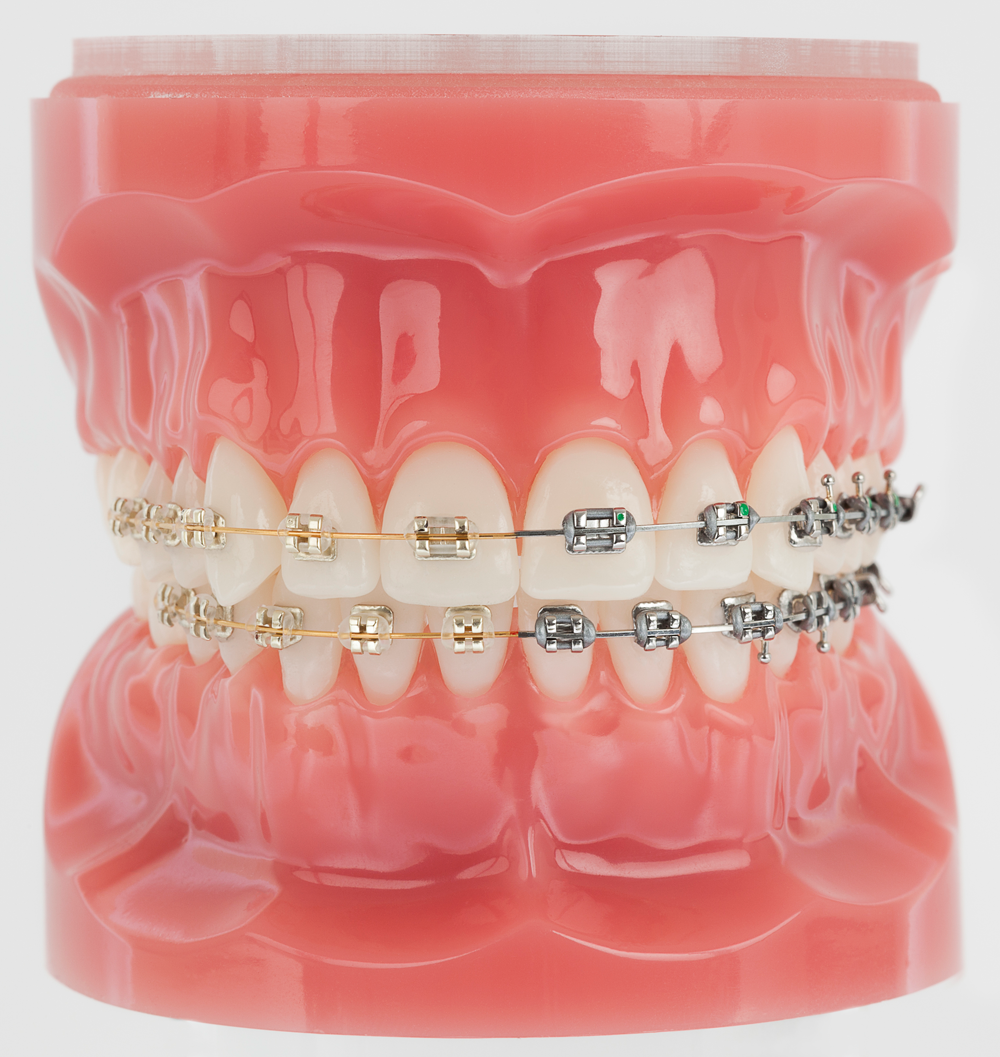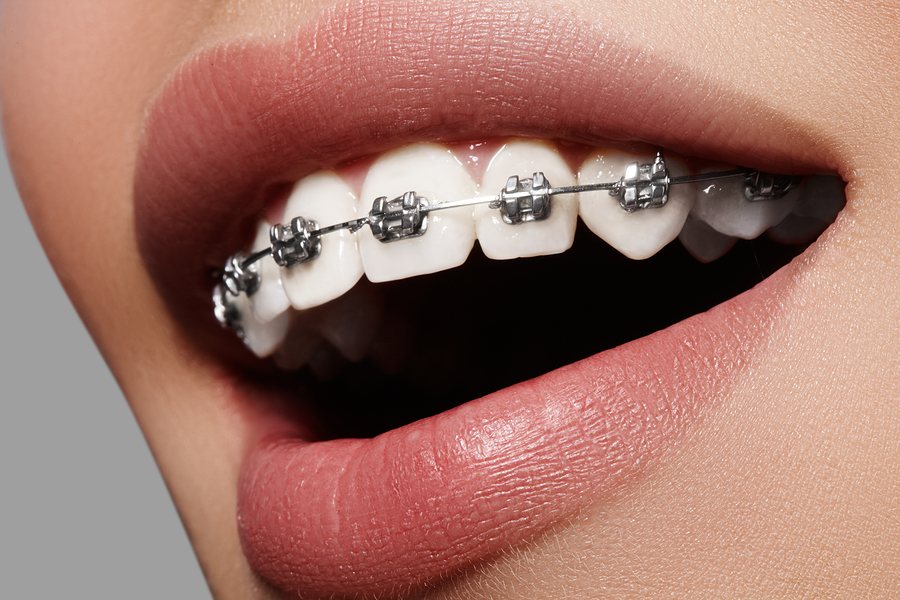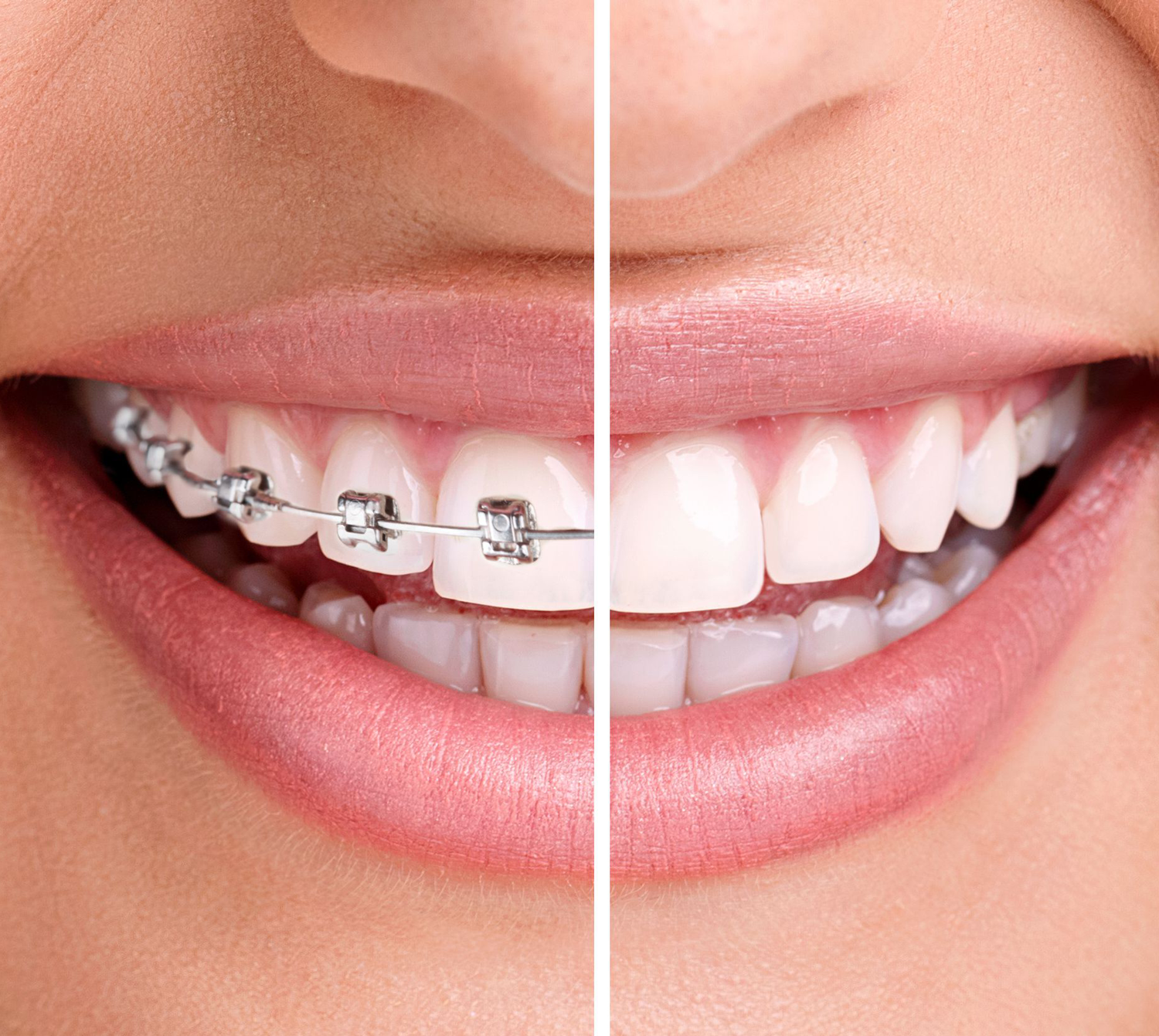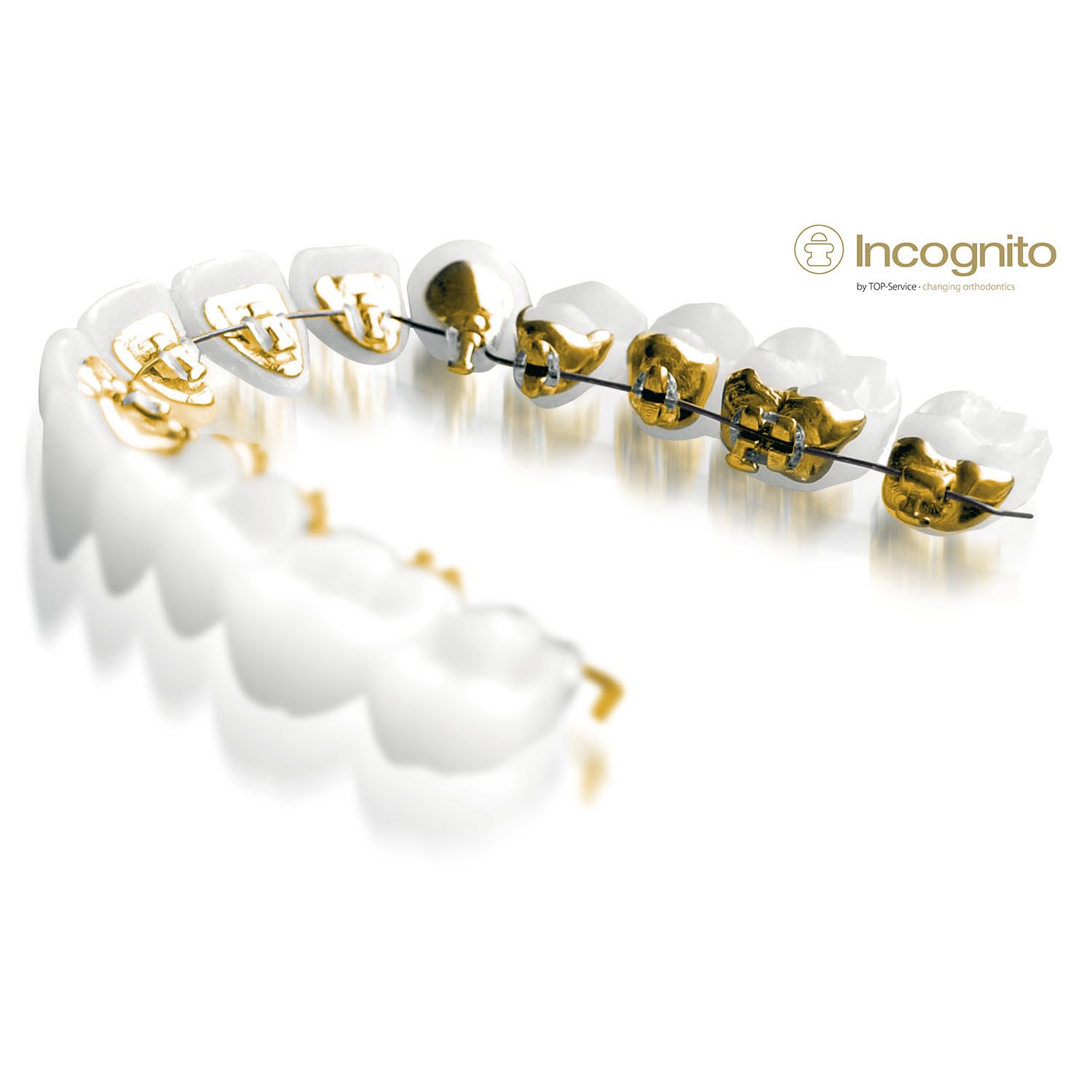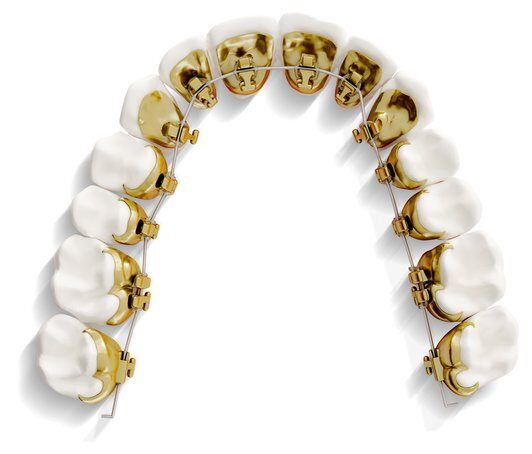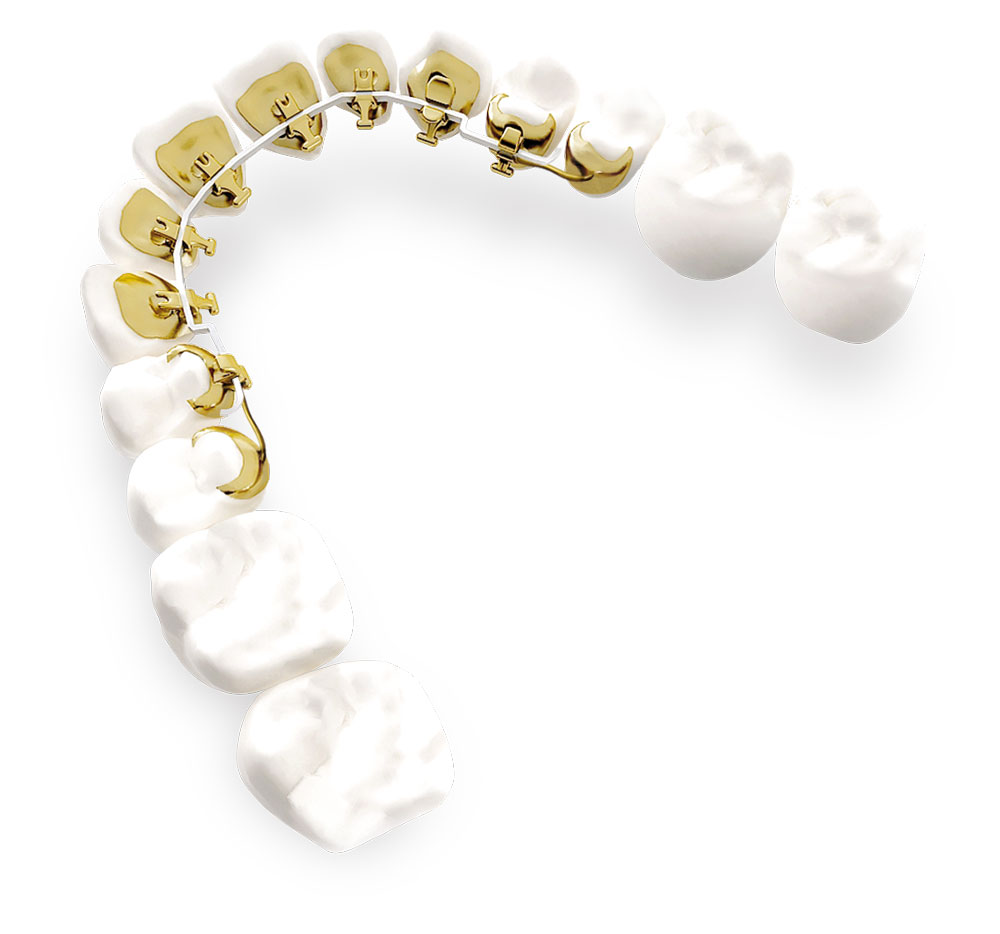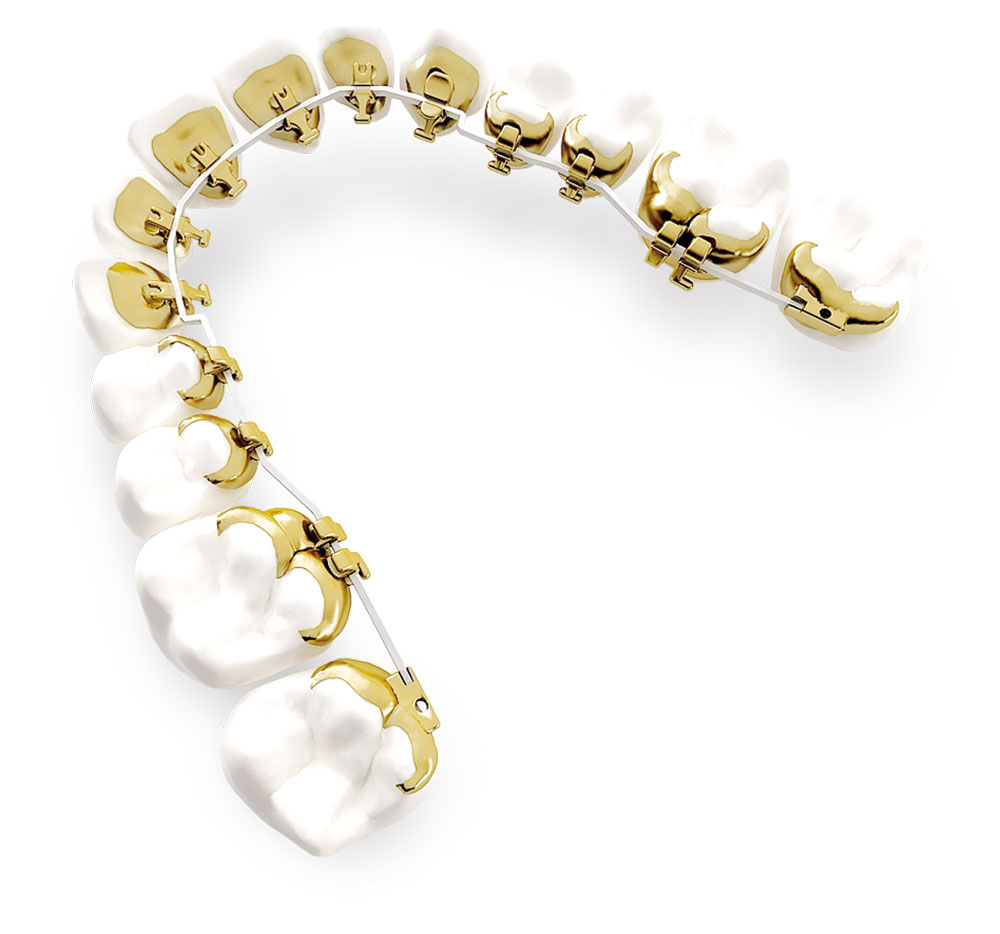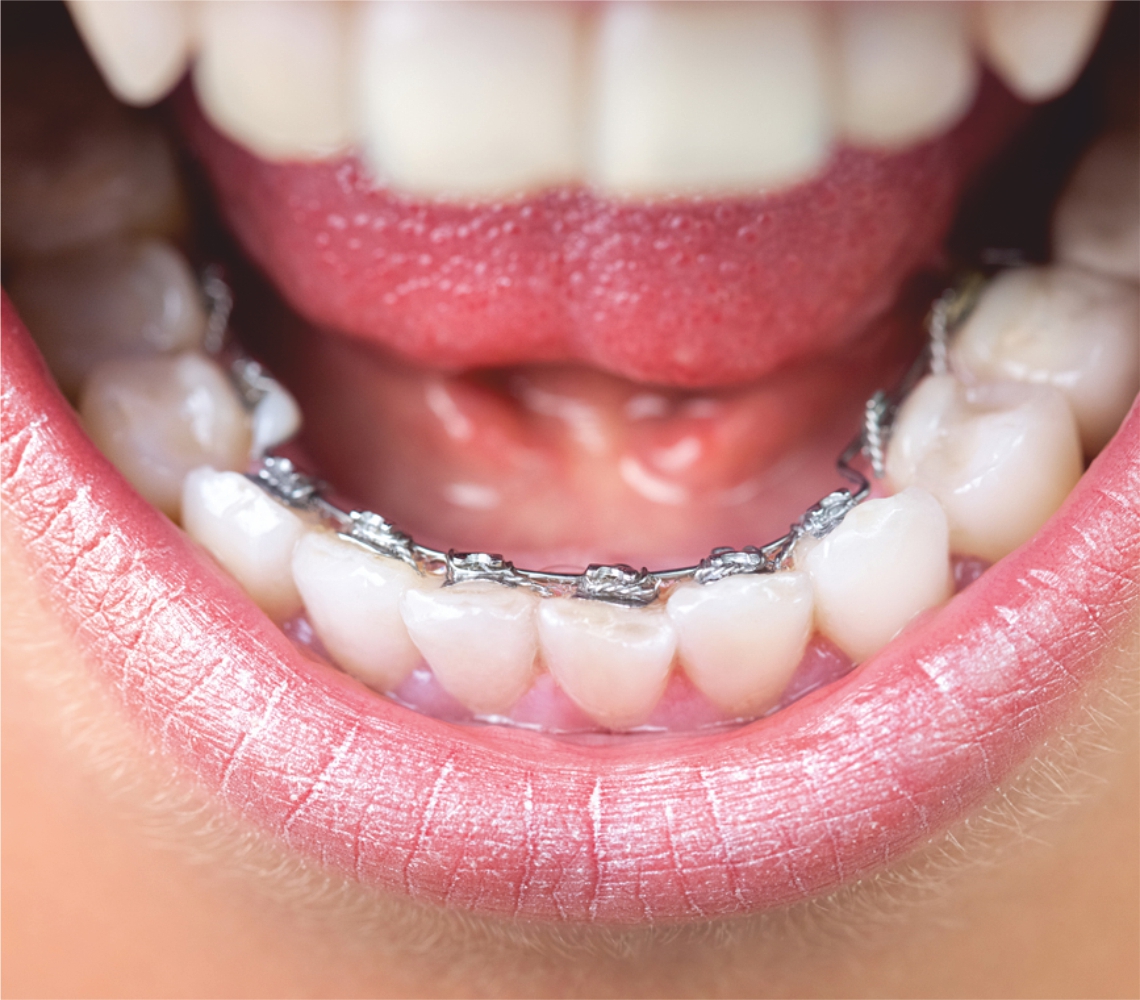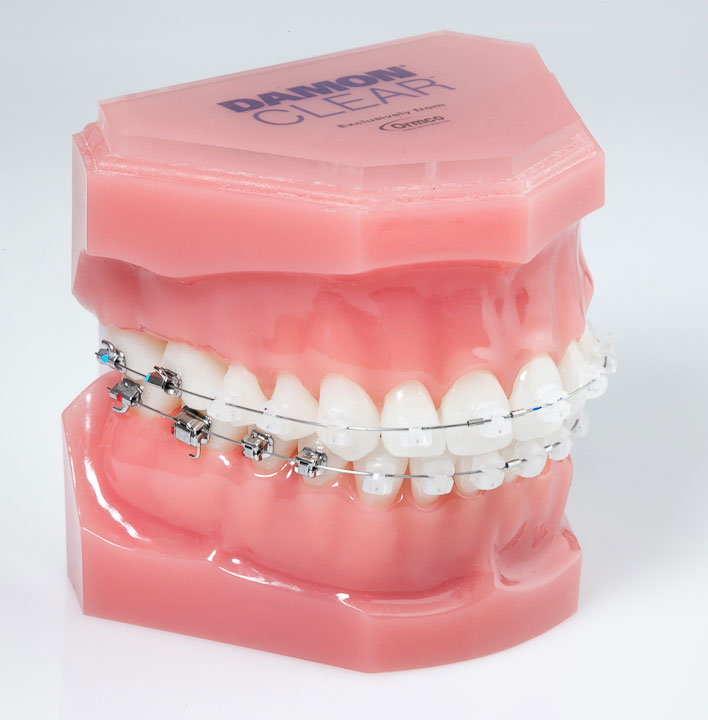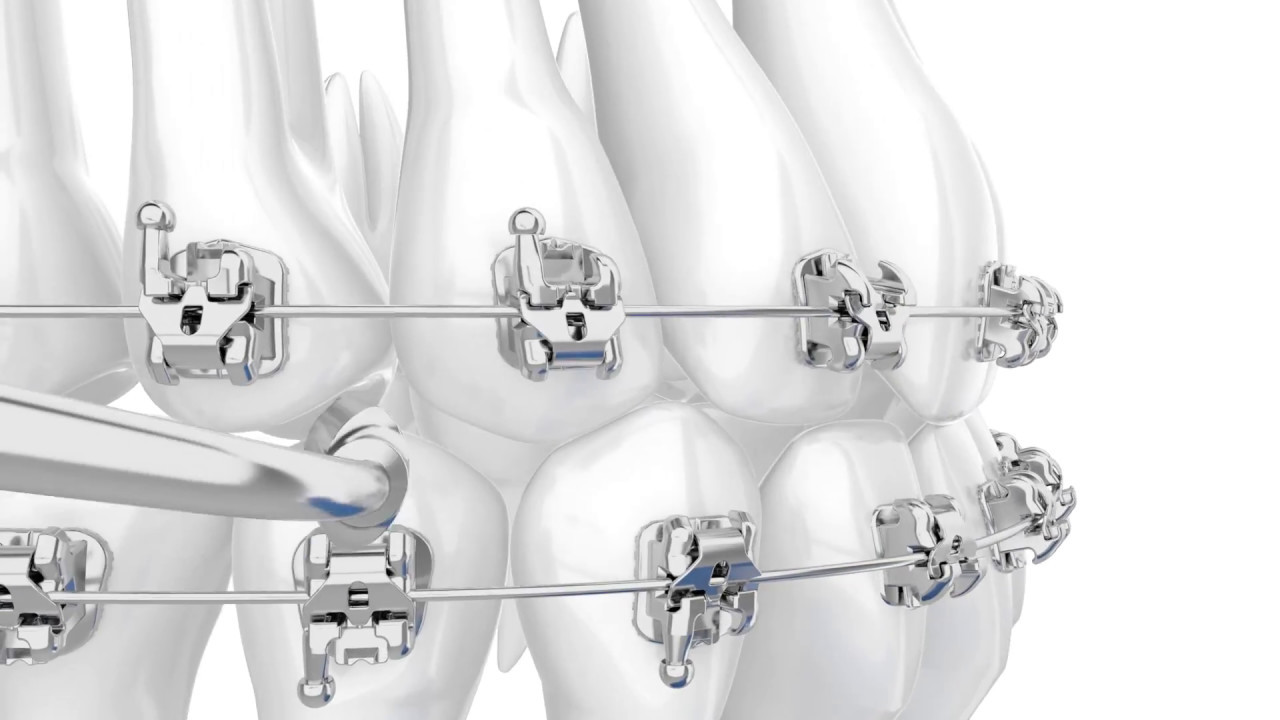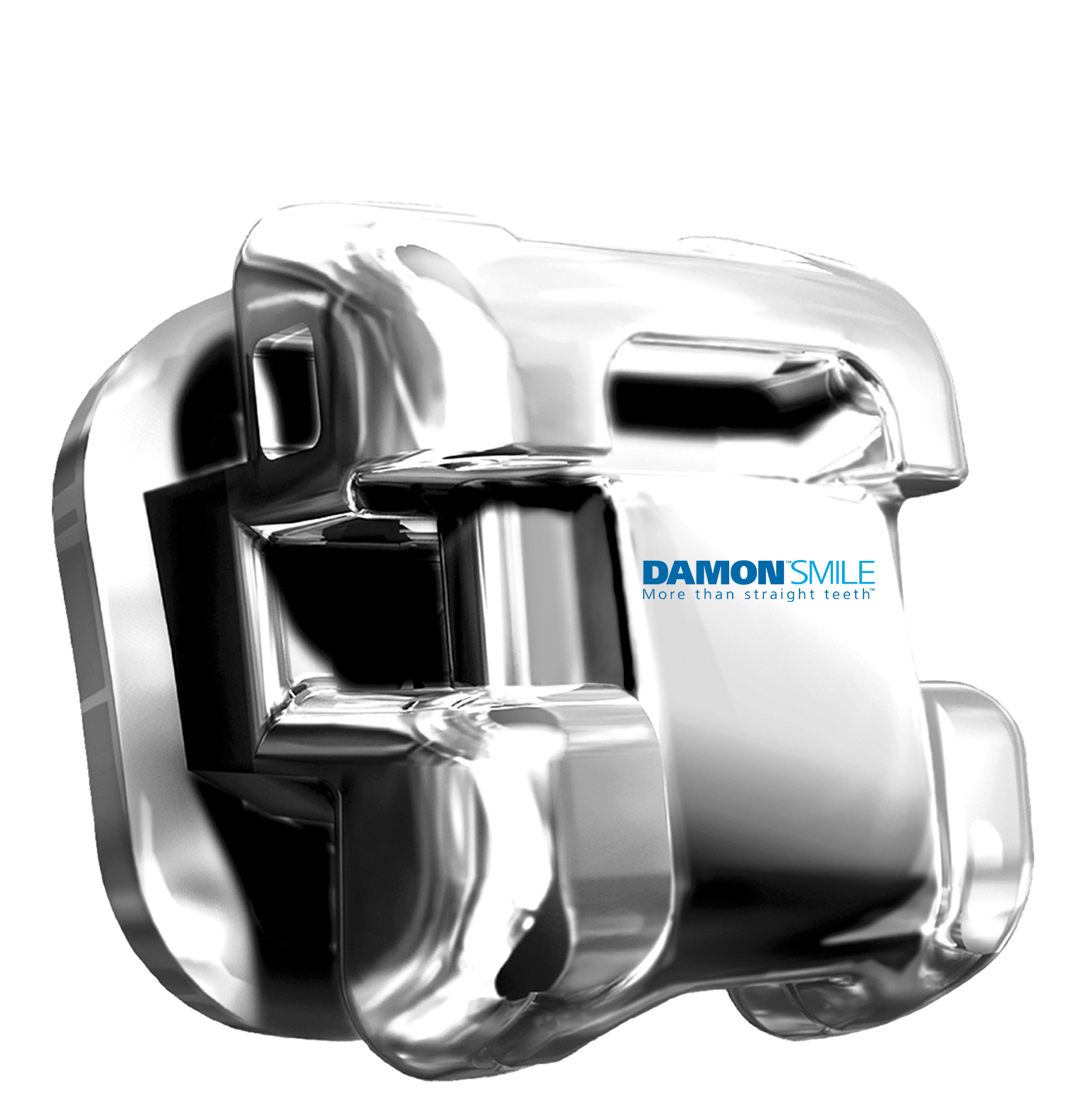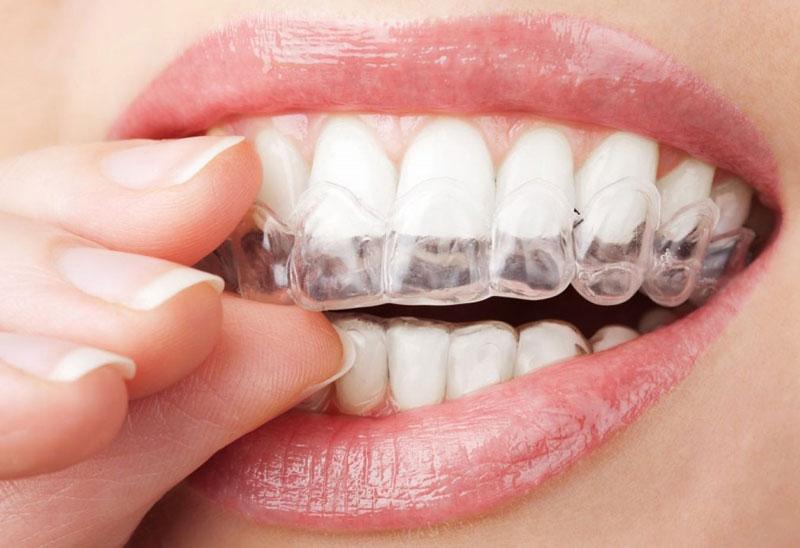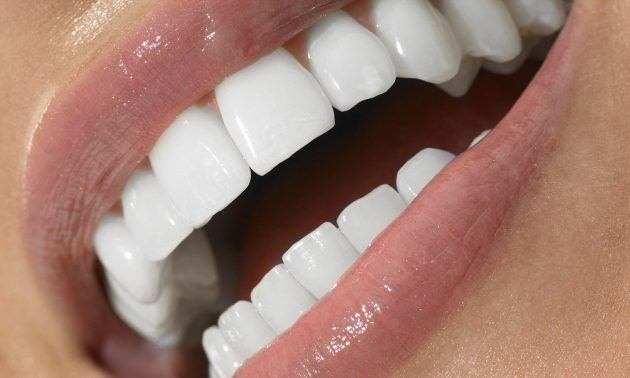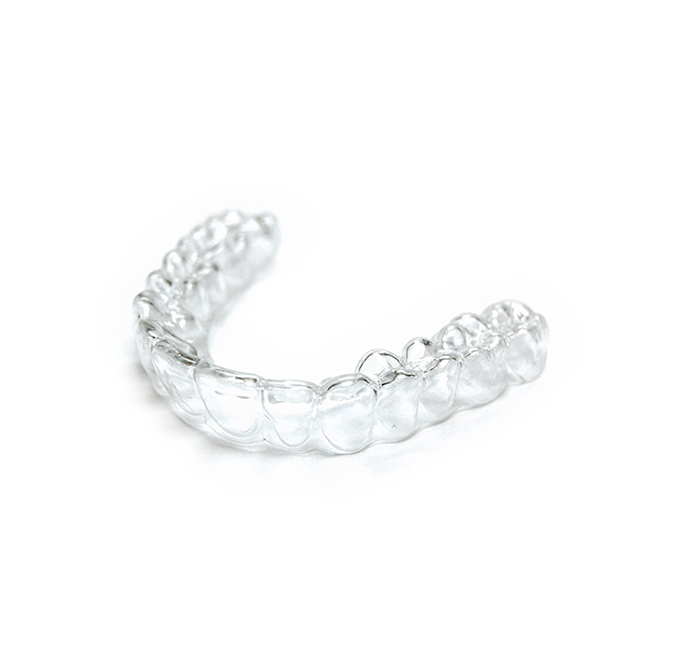Dental braces
Orthodontic braces are small orthodontic attachments (metal or ceramic) secured to a tooth for fastening an archwire.
Orthodontic braces are an integral part of traditional braces and act like handles that hold the arch wires that move teeth. The small squares are typically bonded directly to the front of each tooth and come in a variety of styles and sizes, including self-ligating, lingual and titanium. Self-ligating braces are self-tying, which helps reduce friction between the wire and slot of the bracket. Lingual braces, which are bonded to the back of the teeth, are best for patients who don’t want their braces to be visible, while titanium brackets are an option for patients who are allergic to nickel.
Patients with orthodontic problems can benefit from treatment at nearly any age. An ideal time for placement of braces is between 10 and 13 years of age, while the head and mouth are still growing and teeth are more conducive to straightening. However, because any adjustments in facial appearance can be traumatic to a child during these sensitive years, parents should discuss the matter with their children before braces are applied. And braces aren't just for kids. More and more adults are also wearing braces to correct minor problems and to improve their smiles.
Dental braces (also known as braces, orthodontic cases, or cases) are devices used in orthodontics that align and straighten teeth and help position them with regard to a person's bite, while also aiming to improve dental health. Braces also fix gaps. They are often used to correct underbites, as well as malocclusions, overbites, open bites, deep bites, cross bites, crooked teeth, and various other flaws of the teeth and jaw. Braces can be either cosmetic or structural. Dental braces are often used in conjunction with other orthodontic appliances to help widen the palate or jaws and to otherwise assist in shaping the teeth and jaws.
That depends upon your treatment plan. The more complicated your spacing or bite problem is, and the older you are, the longer the period of treatment, usually. Most patients can count on wearing full braces between 18 and 30 months, followed by the wearing of a retainer for at least a few months to up to two years to set and align tissues surrounding straightened teeth. Some patients may have to wear a permanent retainer if you do not want your bite to return to the way it was.
During the time that you have braces on your teeth, you will need to visit the orthodontist regularly for adjustments to your appliance. After a routine orthodontic adjustment, you may experience some tightness or even a slight amount of pain. If this discomfort or pain does not quickly dissipate, or becomes extreme, you should consult your orthodontist. Concerns about your appliances, and any problems with broken parts, should also be brought to your orthodontist's attention immediately.
It’s also important that you continue with regular visits to your general dentist while undergoing orthodontic treatment. Routine checkups are necessary to spot cavities and signs of gum disease. Your dentist or hygienist may also perform frequent fluoride treatments to provide additional protection to tooth surfaces from decay while you’re wearing braces.
Your home oral care techniques will be monitored by your dental professional and changes will be recommended as necessary. As always, be sure to follow their instructions.
Careful cleaning is required with braces, because plaque bacteria are easily trapped inside and around them. The following procedure will make daily brushing and flossing both simple and effective.Prepare to brush. Take off elastics and any other removable parts of your orthodontic appliance.Clean your braces. Hold your brush at a 45-degree angle to clean around the wires and pins of your braces. Brush from the top of each wire down to the bottom. Take your time to ensure that all plaque and debris are removed, and that you work all the way around upper and lower teeth.Brush your teeth. Clean each tooth individually. First, place your brush at a 45-degree angle the gum line, then apply gentle pressure as you move in a circular motion. Do this for about 10 seconds. Use the same brushing action on all outer and inner tooth surfaces, tilting the brush as needed to better reach the insides of smaller front teeth.Floss once a day. Have your dental professional show you the best way to floss, or follow the instructions on the product package. You may also want to use a flossing product designed for braces and orthodontic work, like a floss threader.Rinse and check your teeth. Rinse thoroughly with water or mouth rinse, and examine your teeth and braces in the mirror.Professional Care: Dentist And Orthodontist Visits
Bite Correction
Bite adjustments, equilibrations, porcelain veneers, porcelain crowns, and orthodontics are dental treatments which are offered to patients as Bite Correction. The cosmetic dentist, anti-aging dentist, or bite specialist can claim bite correction with almost any dental procedure they provide as there is no officially defined specialty or procedure. Patients with obvious symptoms have underbites and cross bites and large lower jaws. The opposite of underbites are overbites with over jets and short round faces with small looking lower jaws and chins.
When patients get headaches, clicking and popping jaw joints, age prematurely and are grinding their teeth at night they have a bite disorder. A bite disorder relates to the position of the lower jaw in relation to the upper jaw and to both TMJ joints. Bite correction has been a highly invasive procedure called a full mouth reconstruction. However, there is a much safer and more predictable method that does not require grinding down healthy teeth or bite correction surgery.
The majority of the adult population have a misaligned bite and many of them are not even aware of the tension and stress it causes. Some people have back pain and don’t equate it is coming from their muscle tension from their bad bite. Some dentists say it is from oral compression habits but the real cause is a compromised position of the lower jaw caused by a bad bite.
Types of Braces
Metal braces/Traditional braces
Ceramic Braces
Lingual Braces
Invisalign
Today's orthodontics offer more kinds of braces than ever before.
Metal braces are the one that earn the nickname “train tracks”. They consist of a metal bracket that is secured to the front of the teeth by a type of strong glue, which gets hardened under a curing light. Unlike the brace of old, the metal brackets of the modern version are significantly smaller and although they are still quite visible, they don’t draw as much attention and are therefor quite suitable as adult braces.
Lingual braces are the same thing as the traditional metal brace with one exception: they placed on the backside of the teeth. These are basically ‘incognito braces’. They can’t be seen when you smile and no one will know they are there. However, there are a couple drawbacks to having brackets and a wire along the back of the teeth. Keeping any form of bracket and wire braces clean can be a chore but with lingual braces, it’s twice as hard. It may also be uncomfortable and affect speech for a short time after they are put on. These are suitable adult braces.
Invisalign
Invisalign consists of a series of 18 to 30 custom-made, mouth guard-like clear plastic aligners. The aligners are removable and are replaced every 2 weeks.
Ceramic braces
They are made of ceramics. Today ceramic braces are used widely. They are very popular with adults as they are more attractive than metal.
The advantages of ceramic braces
- Ceramic braces are invisible because they are selected according to the color of the teeth. Due to this they have a reputation of the aesthetically most aesthetically pleasing: it is almost impossible to notice. Depending on the type of feedstock used - mono-or poly – ceramic braces can be transparent or opaque.
- They are more comfortable than metal, and do not irritate the gums.
- They are durable, never break,and firmly attached to the teeth.
Disadvantages of ceramic braces
Disadvantages of ceramic braces are relative.
- Ceramic brackets are usually more expensive than traditional metal ones.
- Treatment of ceramic braces last longer than with metal ones.
- Usually they are bigger than metal braces.
Braces in the XXI century it is one of the most popular and effective ways of teeth straightening. Thanks to them you will get the perfect smile, harmonious facial features, convenience food and speech. Appearance- that is what many people worry when wearing braces and after. Most refuse treatment with the braces, argue its refusal by the fact that it is ugly! That is why modern dentistry makes great emphasis not on the outcome of treatment, but also on the aesthetic quality of medical apparatus.
To resolve the imperfection of braces to the maximum, sapphire brackets were created. In shape and size- they are almost the same as metal, but unlike the latter, they are transparent, and therefore less visible. It is worth to stress that they are suitable absolutely for any color and shade of the teeth. A thing that can’t be said about ceramic braces.
Advantages of sapphire brackets
Sapphire brackets are quite popular because of undeniable advantages:
- Durability and reliability. Pure single crystal sapphire is one of the most resistant to mechanical impact materials. - Elegance and aesthetics. Sapphire braces are very thin, which making them almost invisible to eye.
- Hygiene. Clear braces do not get coloured from the products, no plaque is formed on them, they don’t change under the action of saliva.
- Neutrality. Sapphire braces don’t distort the taste of food and drinks.
- Security. They don’t cause allergies and are comfortable to use. Sapphire brackets are of high polishing quality and practically don’t rub her cheeks and tongue, so the adjustment period after the installation is minimized.
Disadvantages of sapphire brackets
Sapphire brackets are stronger, than ceramic ones, but, they can break and often come unstuck in the treatment. There are some instances when sapphire brackets are better not to use in case of treatment of some diseases. The patient must listen to his orthodontist, if he says that in this or that case, the sapphire brackets are not the best choice.
Today almost everyone has at least some idea of what the brackets are and why they are for. Any bracket system is, intended, for the treatment of pathological bite. Because of this, not only the function of dentition is restored, but the aesthetics of the human smiles. In some cases, even changing it and , as a rule, to better.
Knowing about their problems, about the need to solve the problem, and even having a great desire to get rid of it, people get a barrier, which, unfortunately not all can overcome. This barrier is aesthetics.
Braces “Incognito” (Incognito) - this is a real breakthrough in the world of orthodontics. Customers, to whom the aesthetics and confidence are primarily important in treatment, chose them. This lingual braces fit both teenagers and adults.
The advantages of brackets “Incognito”:
• Invisible from outside
• Comfortable to wear
• Imperceptible for the patient
• High-tech
• Safe
• Don’t cause allergies
• Doesn’t require addiction and does not distorting speech
• Midget
• Individual
Braces “Incognito”- are the best that can offer orthodontics.
Bracket-system “Incognito” is the exact copy of the form of each tooth and fits tightly to the surface. The result is that - you don’t feel any discomfort, braces Incognito are perfectly adapted to your mouth.
All the bands and features of the system perfectly replicate bends and features of your teeth, the control of all characteristics is carried out using high-tech computer hardware. Thus, you are insured for any errors of omission and, consequently, the associated discomfort. Besides braces “Incognito” are amazingly small, so you will not feel it and the speech will be clear.
Damon braces are self-ligating appliances that are fitted in the same way as traditional metal braces. But instead of having brackets that tighten and adjust the braces regularly, Damon braces use a slide mechanism that attaches wires to brackets to move naturally with the teeth as they realign. This makes them more comfortable, better looking and able to provide strong results in a shorter time.
These braces use a different method for moving teeth into the right position. The braces are attached to memory wire that connects slide brackets without the pressure that traditional elastics often produce. They are then set to move your teeth gradually, tightening over time. The process uses less force than traditional braces, which often require supplemental treatment through tooth extractions and palatal expanders.
Modern orthodontics
Orthodontic aligners
Thanks to the latest technology, modern orthodontics provides not only aesthetic but also functional correction of the dentition, the purpose of which is to get a healthy bite. Modern orthodontics, following the leading technologies, has developed a convenient option for the correction of teeth-transparent aligners which are completely invisible to the teeth and do not cause any discomfort. Aligners or orthodontic aligners can be used to correct any malocclusion.
The use and care of aligners
• Convenience-absolutely comfortable and do not violate the pronunciation of speech
• High aesthetics-aligners are almost invisible because they are made of completely transparent biopolymer materials
• Individuality-orthodontic caps are performed by mechanized 3D computer technology for each patient separately
• Easy care-no need for additional hygiene products
• Safety-aligners are made of hypoallergenic material, and various damage to the mucous membranes of the lips, tongue and cheek are excluded




